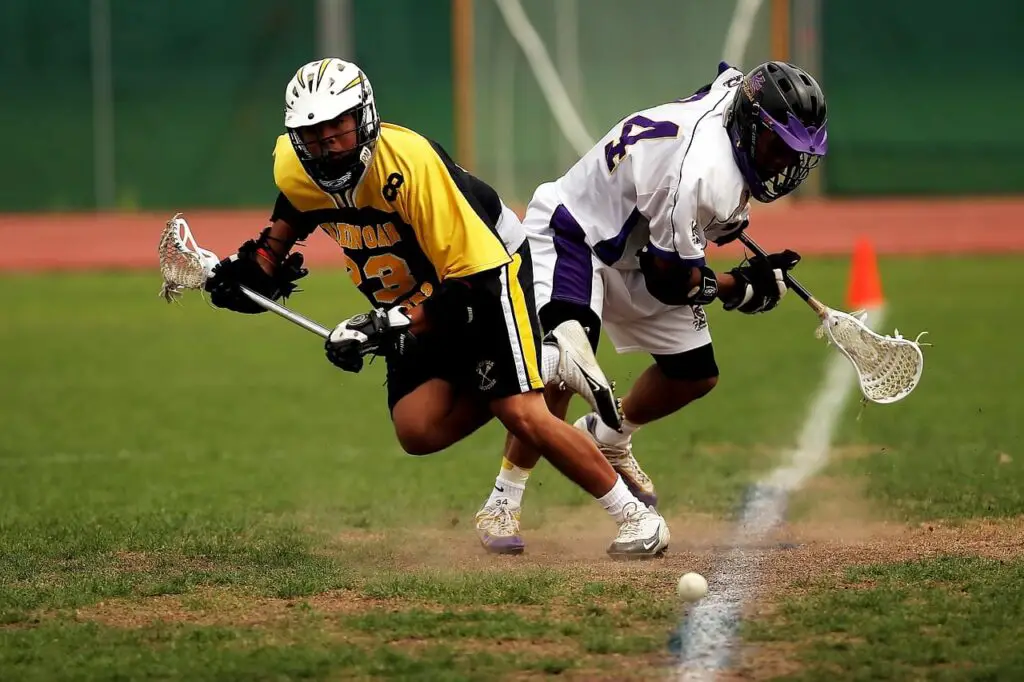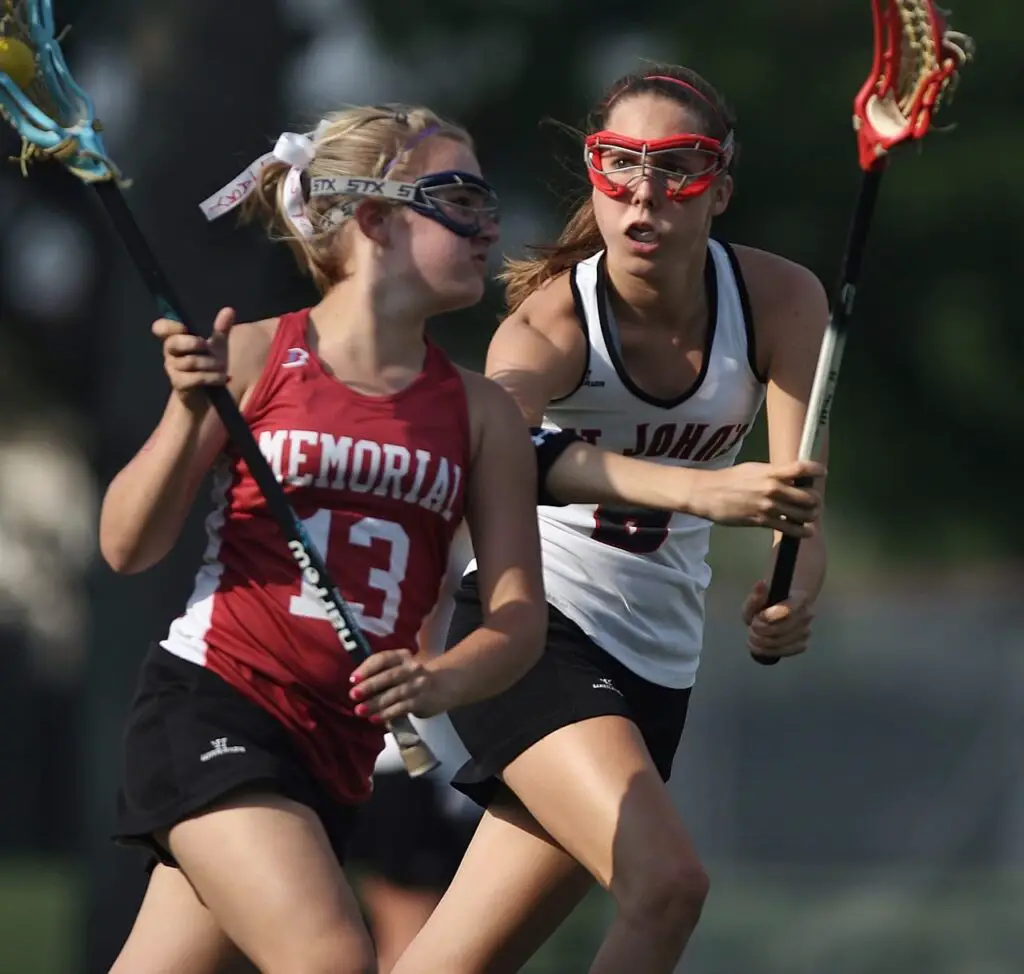Lacrosse and football are two popular North American sports that require players to perform quick cuts, sprint down the field, and maintain traction on grass or turf. With so much fast directional movement, choosing the right cleats is critical. But can athletes wear lacrosse cleats for football or vice versa? Or are lacrosse and football cleats designed differently for their specific sports?
In this in-depth guide, we’ll compare and contrast lacrosse and football cleats to determine if the two are interchangeable or optimized for their respective sports.
Cleat Design and Structure
At first glance, lacrosse and football cleats may appear almost identical. But small structural differences impact performance:
- Number of cleats – Football cleats typically have more cleats on the sole than lacrosse. More cleats provide added traction for football’s frequent stops and starts.
- Cleat configuration – Lacrosse cleats focus cleats on the toe and heel for acceleration. Football cleats have cleats across the width of the foot for lateral cuts.
- Height – Lacrosse cleats have slightly lower profile cleats for better ground feel. Football cleats are higher for more forceful traction and pushing off.
- Padding – Lacrosse cleats have minimal cushioning while football cleats incorporate more shock absorption.
So while the overall look is similar, the cleat stud pattern, height, and padding differ based on the specific demands of each sport.
Weight and Fit
Football cleats are noticeably bulkier and heavier than lacrosse cleats. Extra material around the ankle provides more structure and protection. But this increased weight slows acceleration in lacrosse.
Lacrosse cleats hug the foot tightly with a snug, almost sock-like fit. This enhances feel for stick handling and shooting accuracy. A looser football cleat fit allows more foot protection.
Stud Material
Manufacturers use different stud materials to optimize traction for lacrosse and football:
- Molded plastic – Offers durability for youth and beginner cleats. Heavier than other options.
- Metal – Provides unmatched traction on natural grass. Not ideal for turf play.
- Firm ground (FG) – Versatile plastic studs for use on most natural surfaces.
- Turf – Maximizes rotational traction on artificial surfaces.
Lacrosse emphasizes quick cuts on give-and-take natural grass. So FG or short metal studs provide balance. Longer turf studs hamper mobility.
Football is played on harder surfaces – turf or heavily maintained grass. So turf studs or long molded cleats deliver the strong traction needed.
Position-Specific Designs
Within each sport, cleats tailor their design for specific positions:
Football:
- Linemen – Heavier reinforced cleats withstand trench play.
- Running backs – Low tops allow quicker cuts and fast pace.
- Quarterbacks – Focus on lightness for mobility and throwing stance.
Lacrosse:
- Attackers – Flexible, barefoot-like fit for stick skills and shooting.
- Defenders – Integrated ankle cushioning for frequent abrupt stops.
- Goalies – Toe and heel cleats enhance explosive lateral movements.
Football has more specialized designs since players can’t substitute freely. Lacrosse players frequently rotate positions requiring versatility.
Are Lacrosse Cleats Usable For Football?
Lacrosse cleats don’t offer the same level of protection, traction, or support as football-specific options. The snug fit, lower profile, and quicker release studs make them less than ideal for football play.
Wearing lacrosse cleats for football increases injury risk. The lack of heavier reinforcement around the ankle and tighter strapless fit provides insufficient foot stabilization for the rigorous physicality and frequent contact of football.
While better than running sneakers, football players wearing lacrosse cleats sacrifice too much support and power.
Can Football Cleats Work For Lacrosse?
The bulky, thick padding of football cleats around the ankle cuts down mobility for lacrosse players. Additional weight from thicker materials also slows acceleration on the field.
Higher football cleats provide less ground feel vital for maintaining control with lacrosse stick handling. Wider studs catch in grass when making quick cuts.
Football cleats offer excessive ankle protection unnecessary in non-contact lacrosse play. Some midfield and attack players opt for a flexible dynamic cleat fit closer to a lacrosse model.
Goalies and defenders in lacrosse might benefit from some added bulk of football cleats for physical play around the goal crease. But midfielders and attackers require more nimble cleats optimized for speed and mobility.
Final Thoughts on Comparing Lacrosse and Football Cleats
While lacrosse and football cleats share similarities, small design nuances tailor performance for each sport:
- Football cleats offer more protection, stiffness, traction for frequent contact.
- Lacrosse cleats focus on lightweight feel and acceleration for fluid play.
- Stud patterns, padding, and fit differ based on sport movements.
- Positions in each sport have specialized cleat needs.
The bottom line – lacrosse and football cleats are not interchangeable. While football cleats can work in a pinch for some lacrosse positions, they fall short of optimal. And lacrosse cleats lack the reinforcement needed for safe and effective football play.
Both sports benefit from footwear engineered specifically for their fast-paced directional demands. While models continue to crossover in aesthetic design, under the surface crucial performance differences remain between these two types of cleats.


